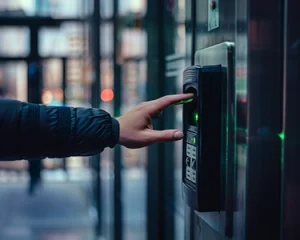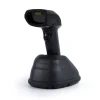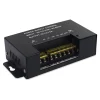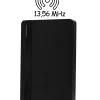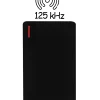In the realm of barcode scanners, there’s a wide variety of devices available, catering to different scanning needs. To choose the right scanner that meets our expectations, it’s essential to have specific requirements for the scanning equipment.
Market-available readers differ not only in the type of codes they read but also in their scanning mode, connection type, or the scanning system they employ. Barcode scanners utilize various scanning mechanisms, which can be equipped with a laser, CCD (Charge Coupled Device), or CMOS (Complementary Metal-Oxide-Semiconductor) array. The primary difference in this classification lies in the type of scanning beam displayed.
In this article, we will discuss:
- Scanning engine equipped with a laser
- Scanning engine based on a CCD array
- Scanning engine equipped with a CMOS array
- Differences between the CCD and CMOS arrays
- Differences between CCD, CMOS arrays, and a reader with a laser engine
Scanning Engine Equipped with a Laser
Laser readers are the most popular and commonly encountered. The laser system is also the oldest scanning mechanism. The displayed laser beam takes the form of a thin, horizontal line. It allows for precise scanning of leading one-dimensional codes, making it suitable everywhere simple, standard codes consisting of vertical bars (1D codes) are used.
Scanning Engine Based on a CCD Array
The CCD (Charge Coupled Device) array is one of the most crucial components of modern digital cameras. It serves as the heart of the digital camera and is responsible for capturing and processing images. This array is a combination of special technology called imaging technology. It is an integrated electronic circuit composed of millions of tiny elements capable of capturing, processing, and storing images. CCD arrays began to be used not only in photographic cameras but are currently employed in scanners, video cameras, barcode readers, object detection systems, television systems, and other devices.
Scanners with a scanning system based on the aforementioned component offer a light source in the form of an LED diode. The emitted scanning beam appears as a wider, horizontal line. CCD arrays significantly increase the range of applications for readers, allowing the reading of 1D barcodes and, depending on the model, 2D codes (which have the form of a graphical symbol, e.g., QR). A major advantage is the ability to read codes displayed on LCD screens and displays of mobile devices.
It’s also important to note that the CCD array does not have moving parts, which guarantees higher resistance to mechanical damage.
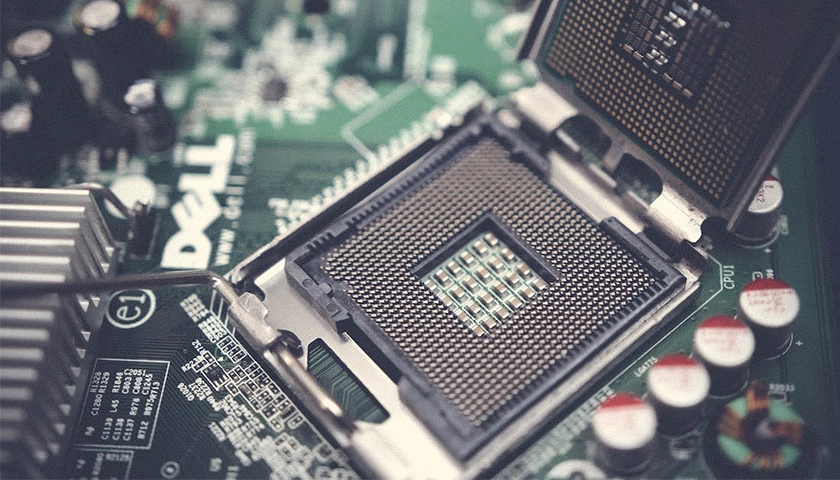
Scanning Engine Equipped with a CMOS Array
The CMOS (Complementary Metal-Oxide-Semiconductor) array is a type of integrated circuit commonly used as a component in digital cameras. It’s very popular because it can perform many functions within a single circuit, and it’s cost-effective. This type of array offers several advantages, including a simple structure, higher efficiency, and lower power consumption. It can also process high-quality video signals. This is particularly important for digital cameras, as it allows for the production of high-quality photos and videos.
The above features of the discussed component have led to its use in other devices as well. Thus, the CMOS array has found its application in the scanning engine of a barcode reader. Similar to a scanner equipped with a CCD array, a scanning engine based on a CMOS array offers a light source in the form of an LED diode, and the light beam is a wider, horizontal line. Such barcode readers also allow for scanning barcodes or QR codes, not only from paper labels but also from LCD displays.
The greater resistance to mechanical damage in the case of the CMOS array is also an important factor and a significant advantage.

Did you know...
- CMOS array barcode readers were originally developed by Texas Instruments in the 1980s.
- CMOS technology became popular as a barcode reading technology because it is more energy-efficient than the technology that was previously used for reading codes.
- The first commercially available CMOS array barcode reader was introduced in the 1990s.
- One of the first CCD array barcode readers was developed by Symbol Technologies and was released to the market in 1988.
- The first laser barcode reader was developed in 1974 by George Laurence and David Collins.
Differences between CCD and CMOS array
When it comes to the basic difference between the two arrays, the CCD (Charge Coupled Device) array was created earlier than the CMOS (Complementary Metal-Oxide-Semiconductor) array, which is its enhanced version. Moreover, the CCD array operates as a light sensor system, mediating in the conversion of light signals into electrical signals, while the CMOS array is an integrated circuit where both signal processing and image processing occur within the same chip.
Given that the CCD array is older, it requires more energy to process images than the CMOS array and is somewhat more expensive to manufacture.

Differences between CCD, CMOS array and laser engine reader
The fundamental difference between a scanner with a CCD or CMOS array and a laser scanner is the emitted light beam, which takes the form of a thin horizontal line. Additionally, in the case of a laser-based engine, barcodes can be scanned from a greater distance compared to a scanner with a CCD or CMOS array. Moreover, the laser scanning system requires less light for scanning, making it usable in dimmer rooms. However, it is not possible to read codes from LCD screens and displays of mobile devices, and such a reader consumes a bit more energy for its operation.
We invite you to visit the HDWR store website, where you will find a wide selection of barcode and 2D QR readers and scanners, both in laser version and equipped with CCD or CMOS arrays.
Summary
In this article, we learned what CCD and CMOS arrays are and how a reader equipped with a laser engine works. We also discovered the differences between these three barcode scanning mechanisms. Additionally, the above entry provided insights into the advantages and disadvantages of the mentioned scanning systems, which may help make a choice when purchasing a barcode reader.
![High-level security and control – Access Control Systems [2024]](https://hdwrglobal.b-cdn.net/wp-content/uploads/2024/04/transparent-thegem-product-justified-landscape-s.png)
